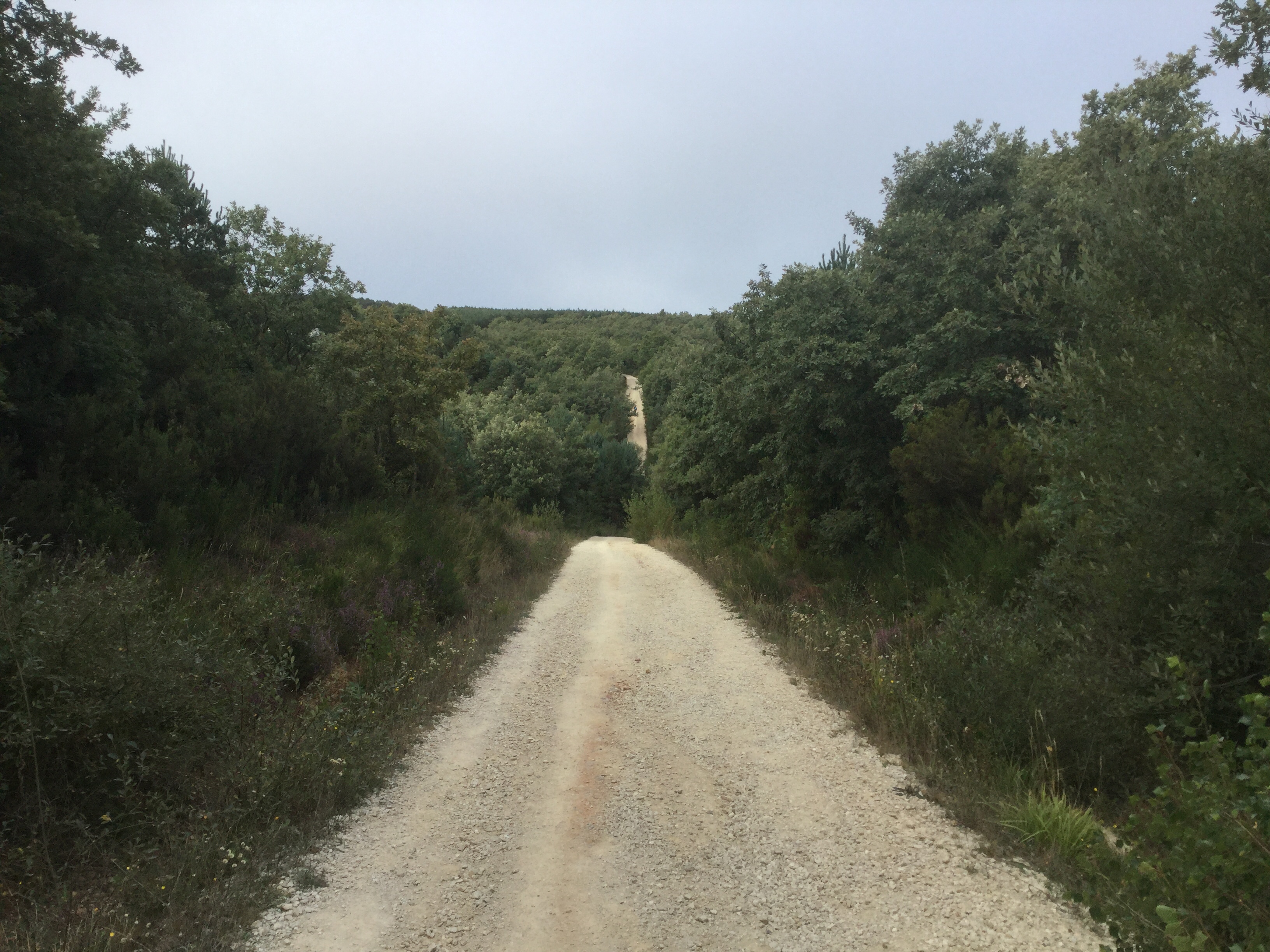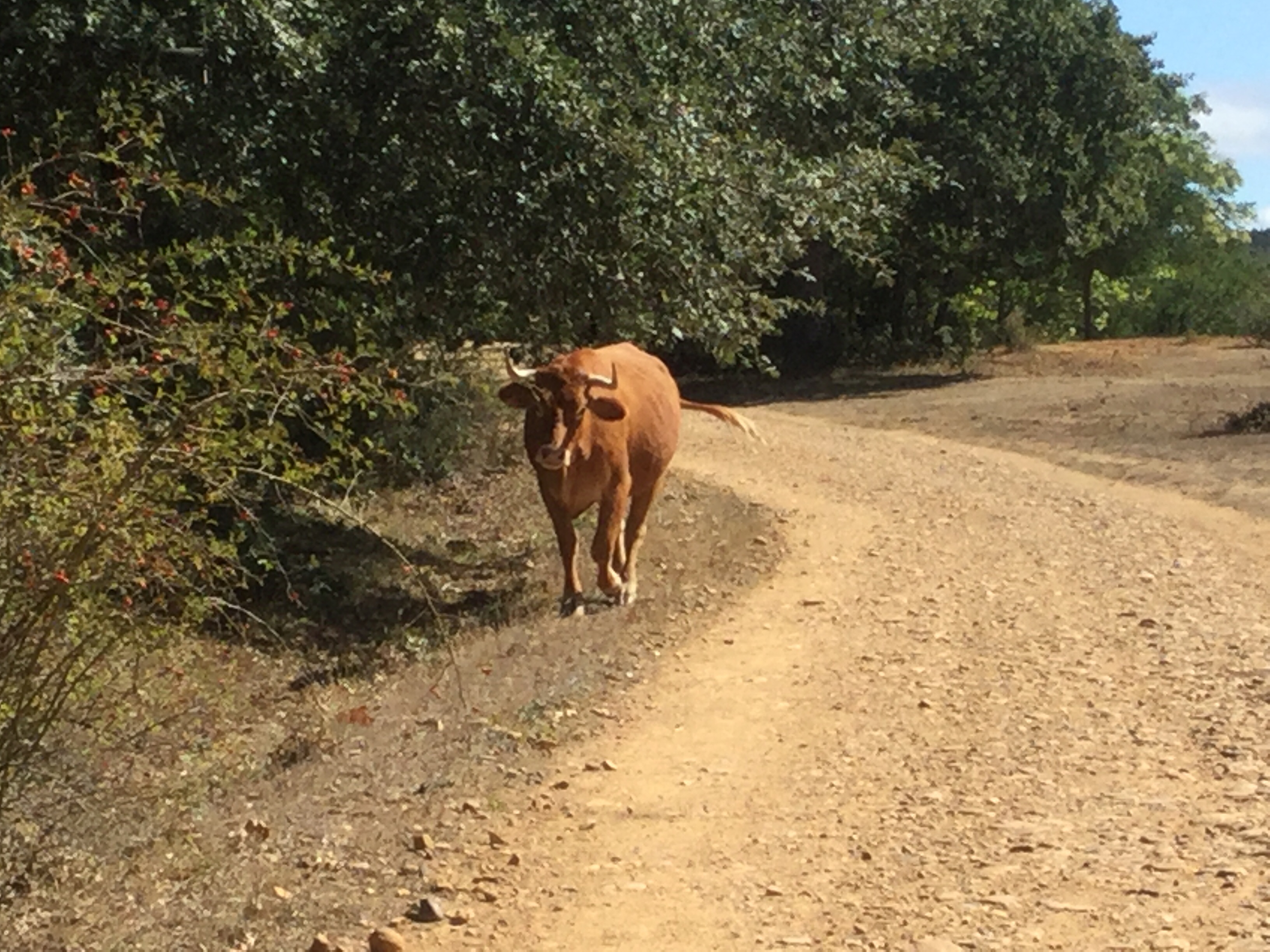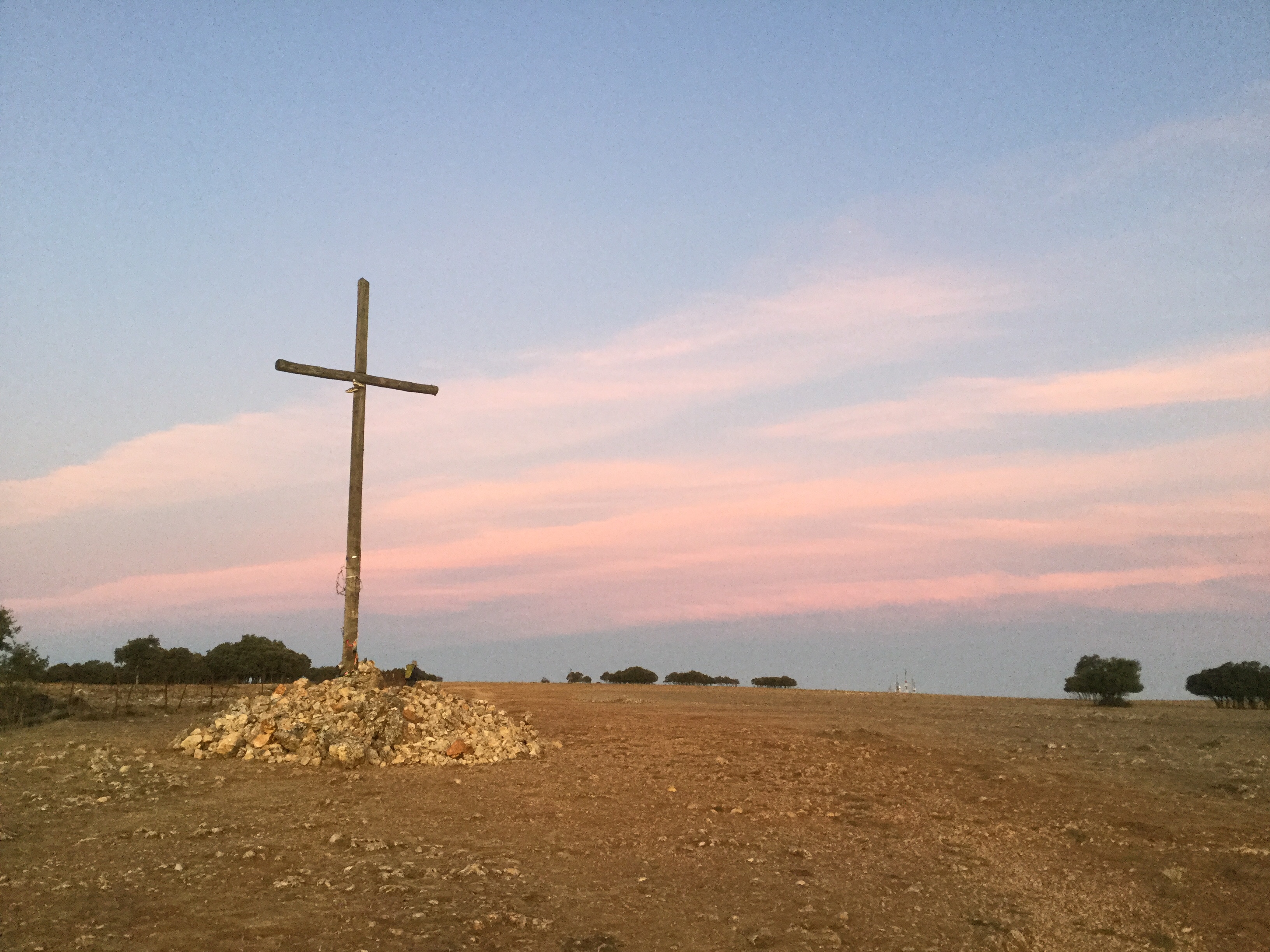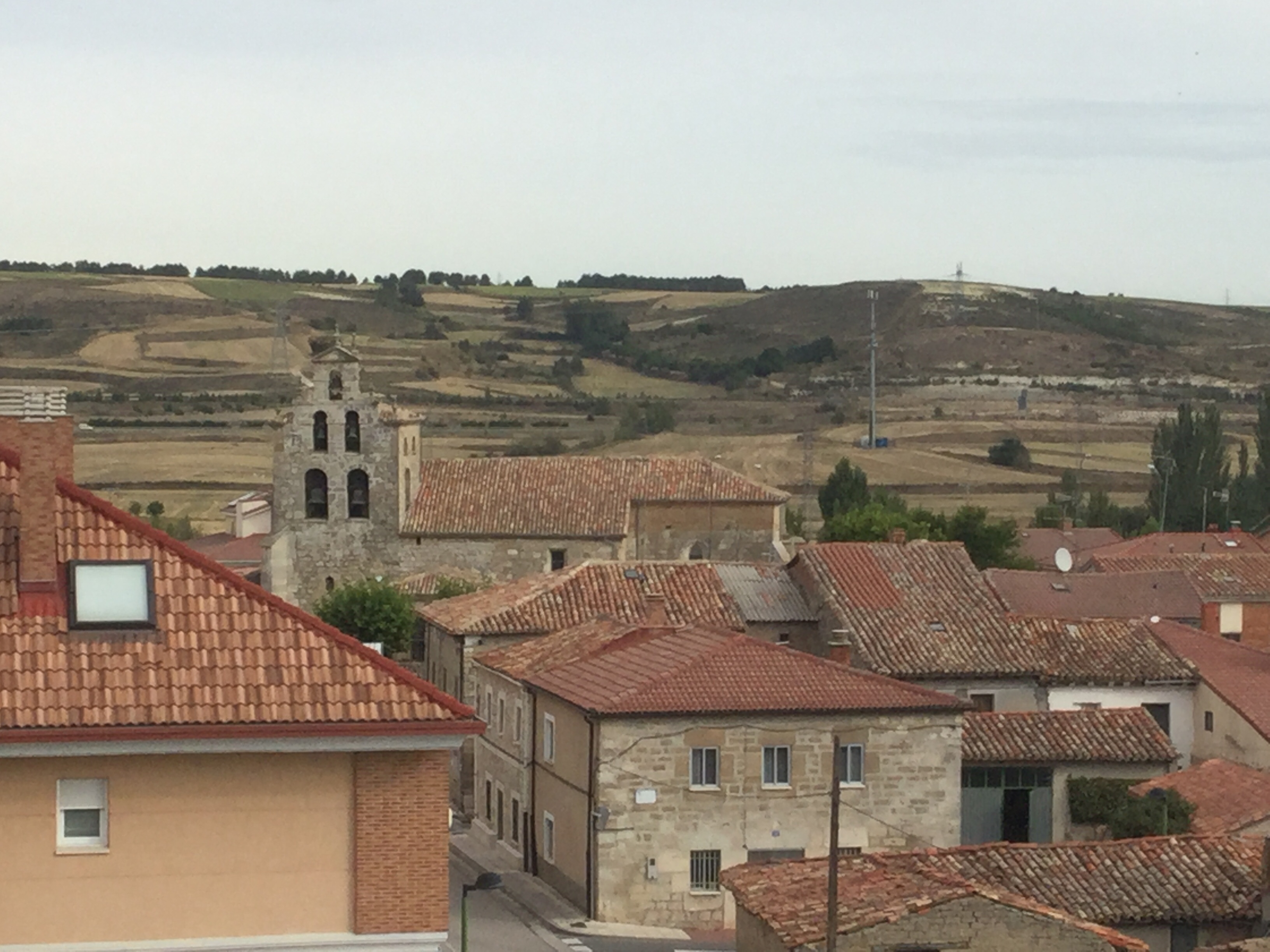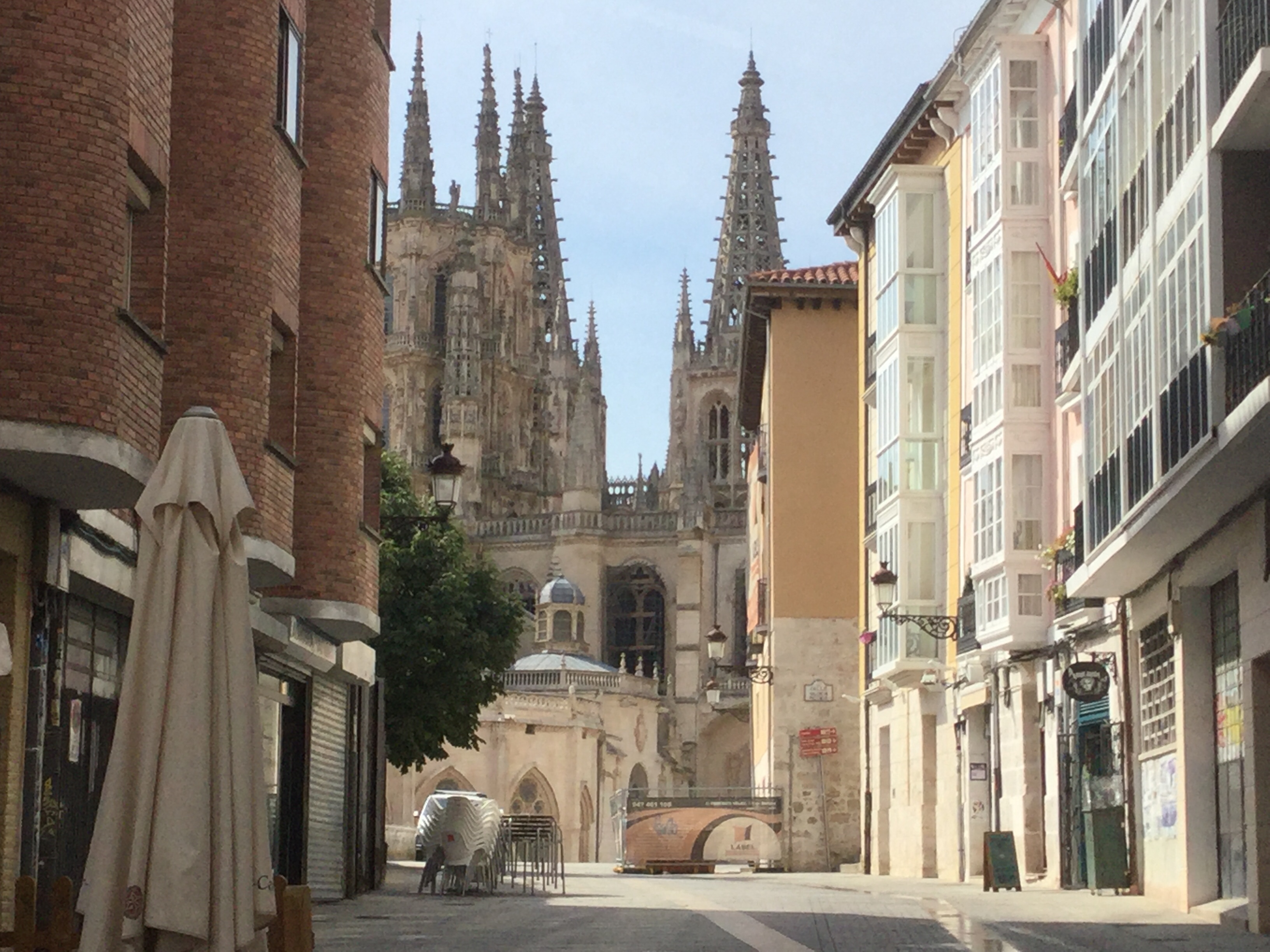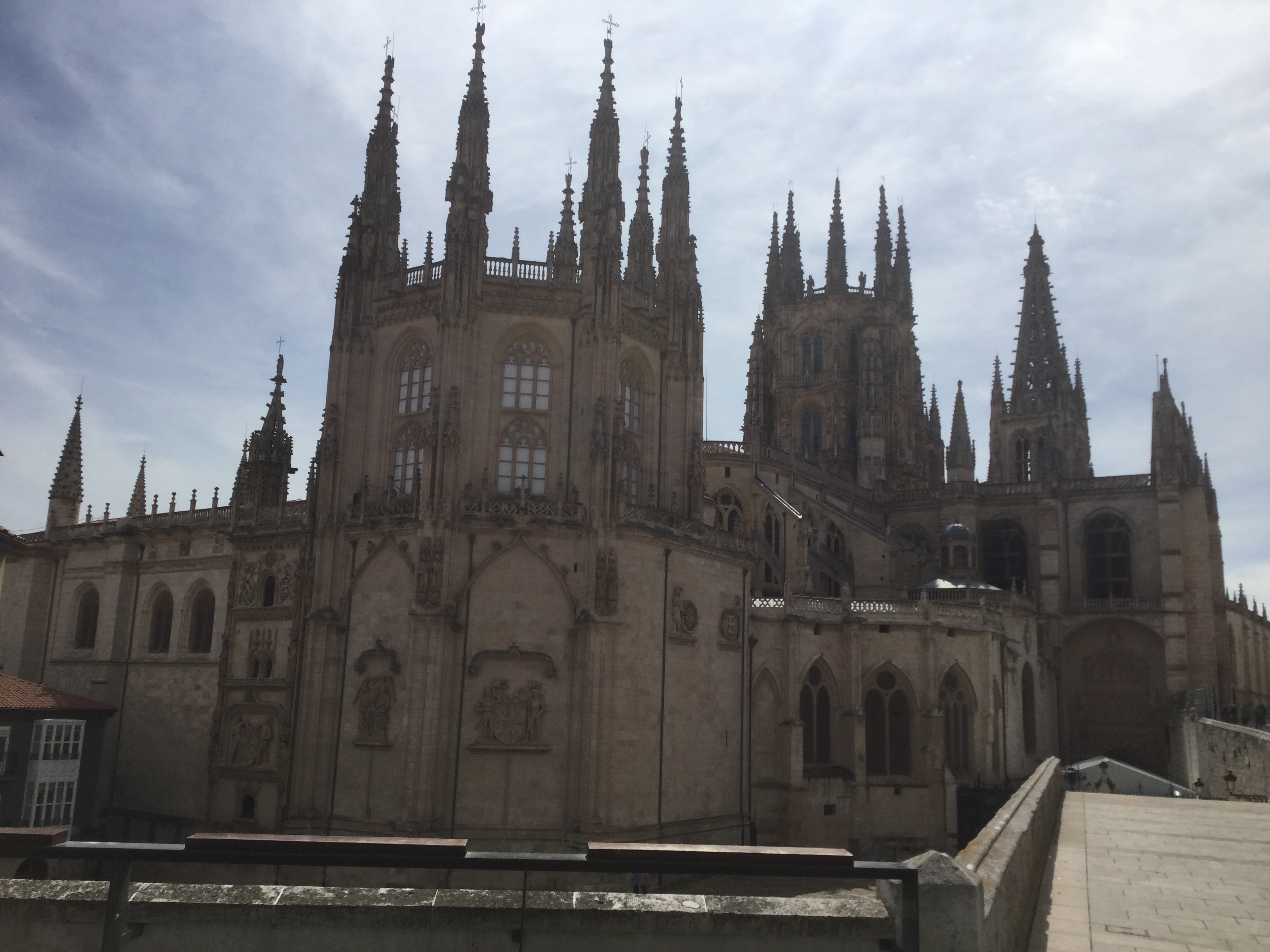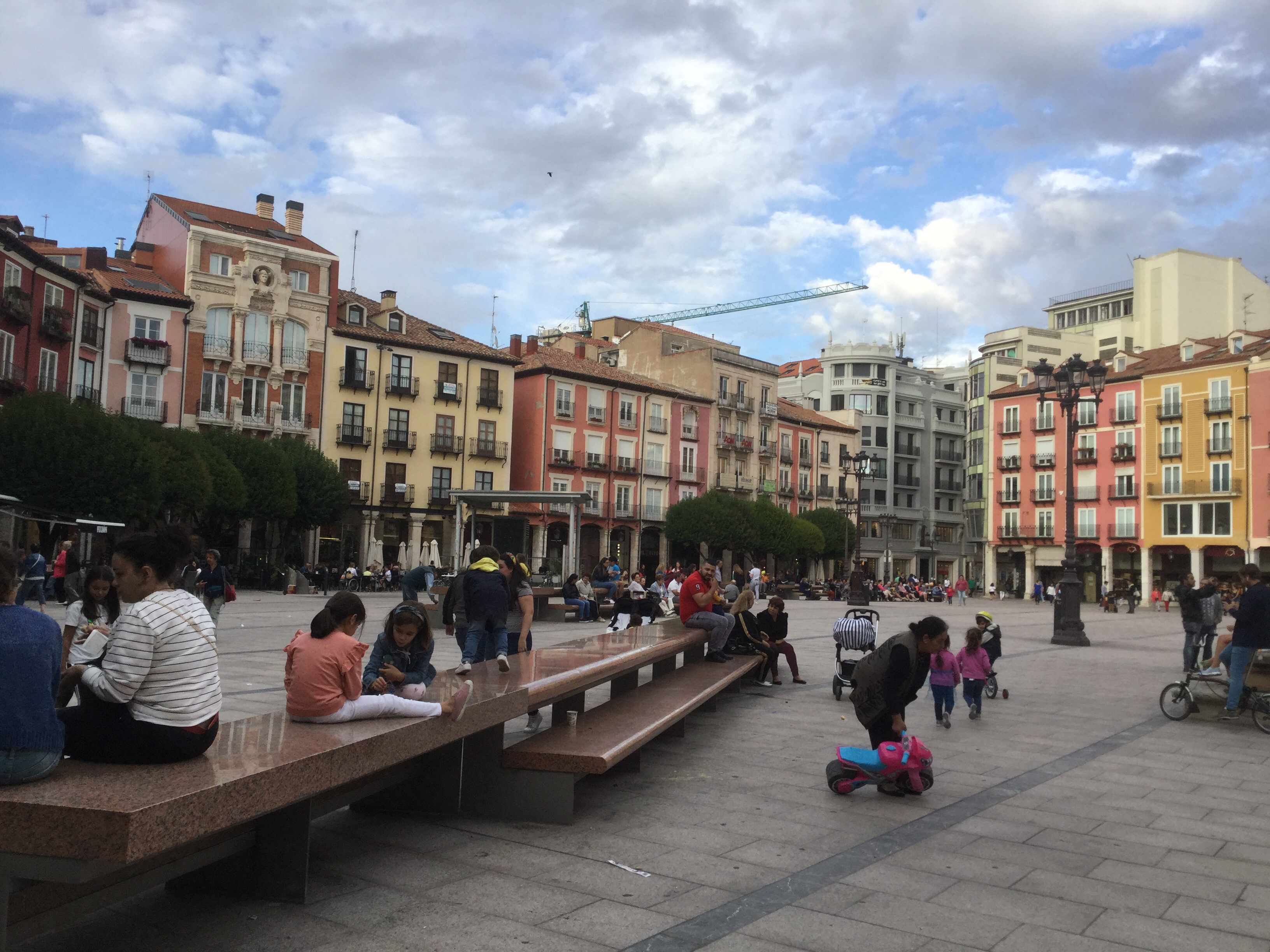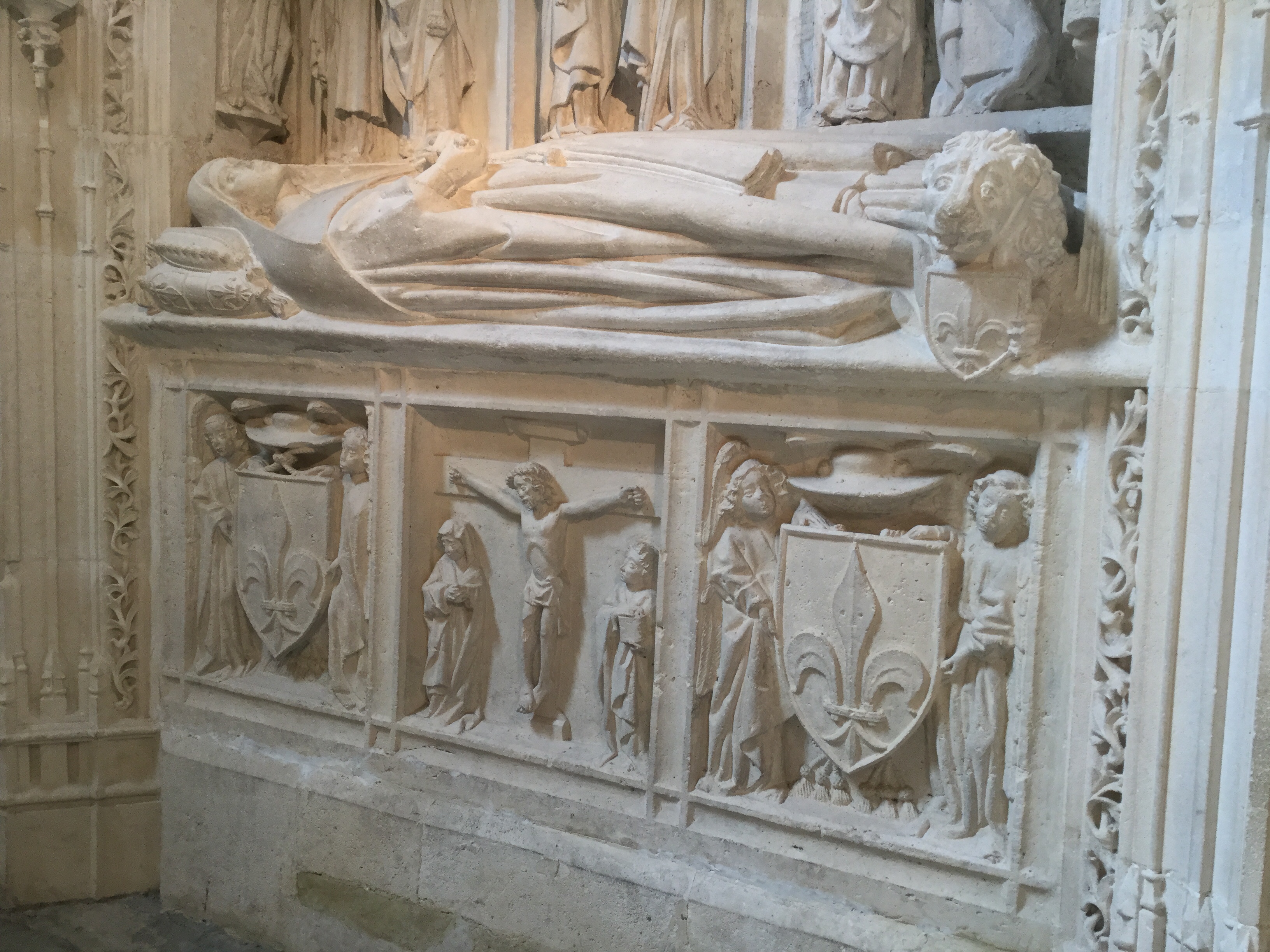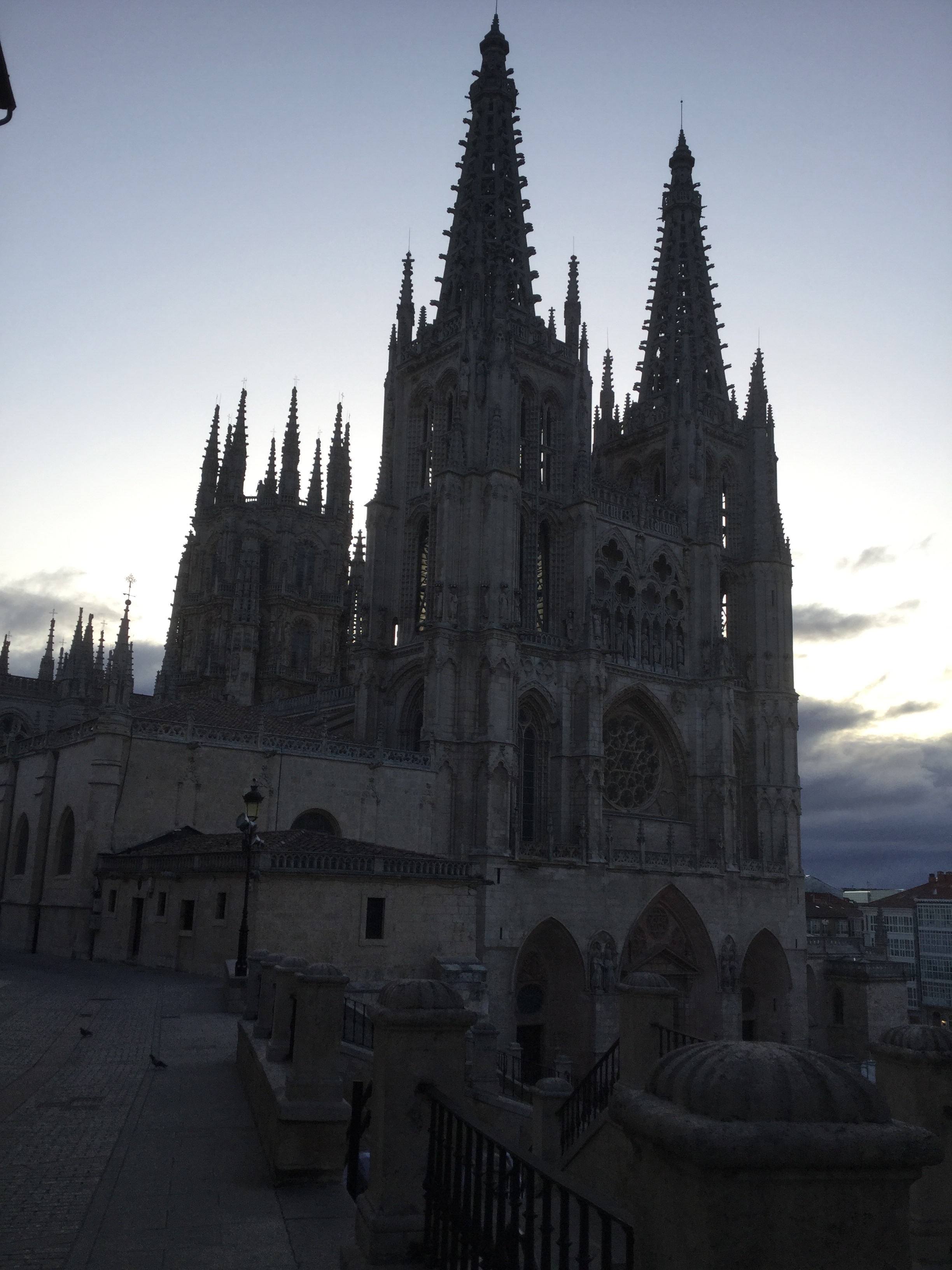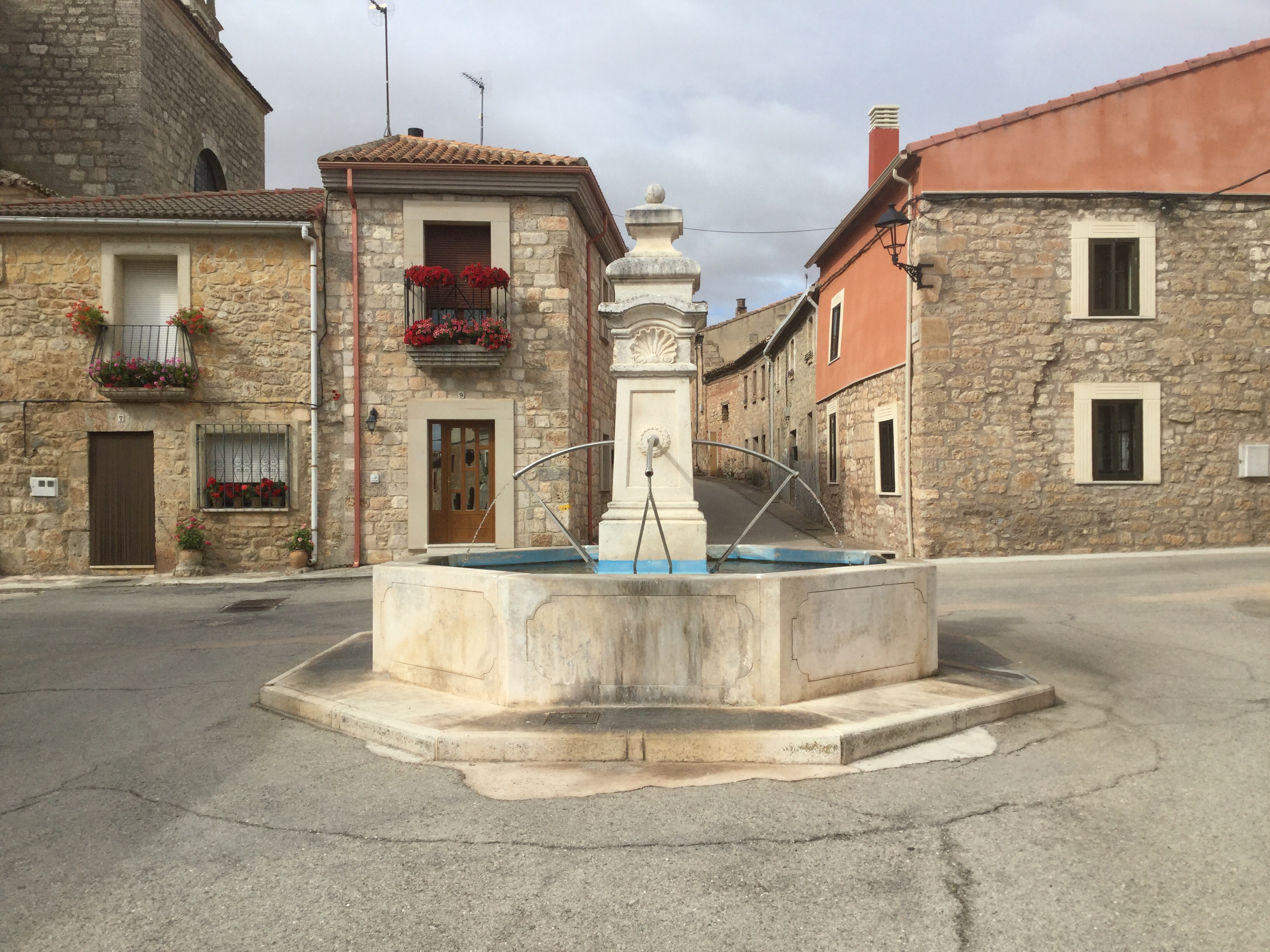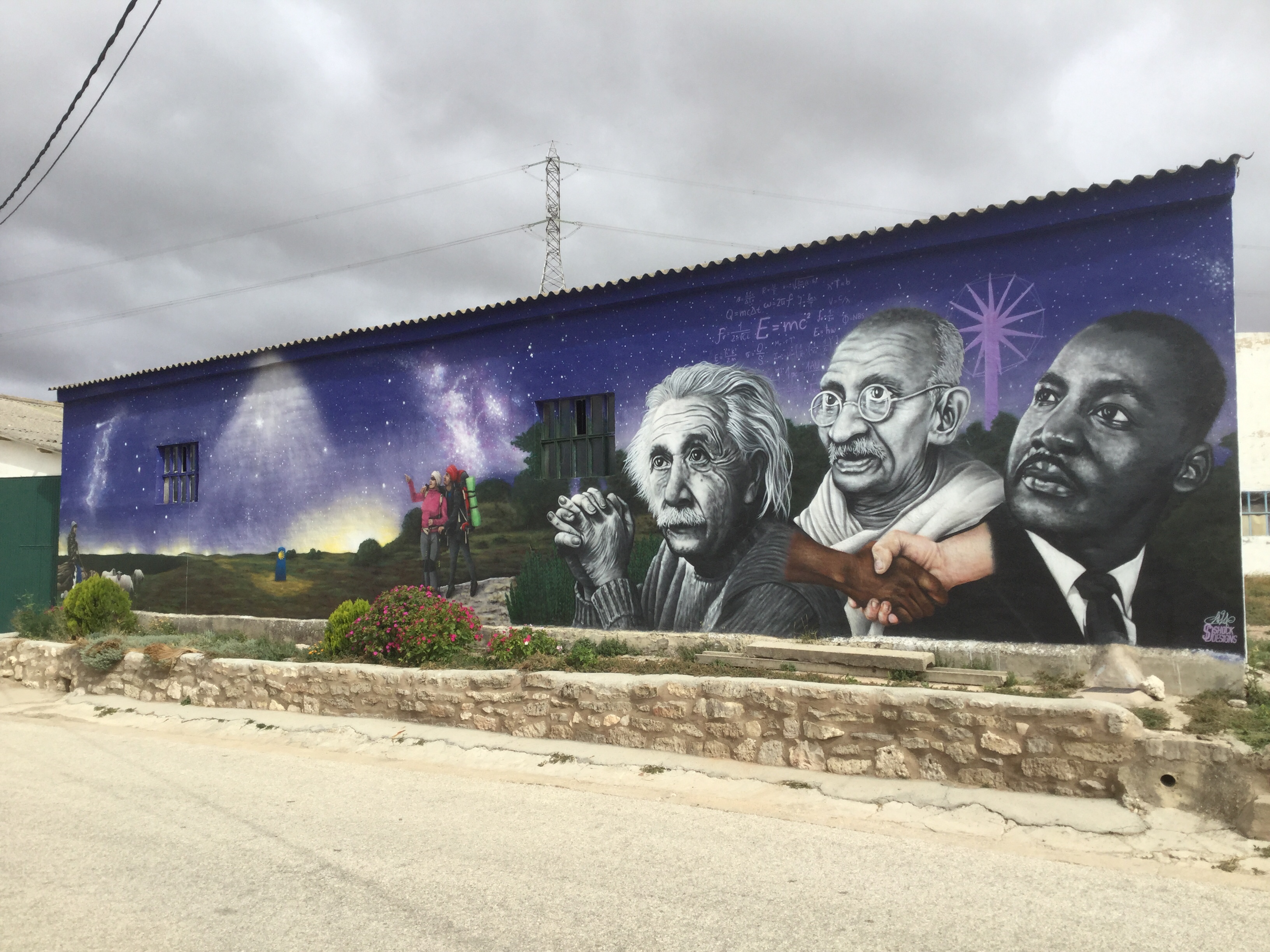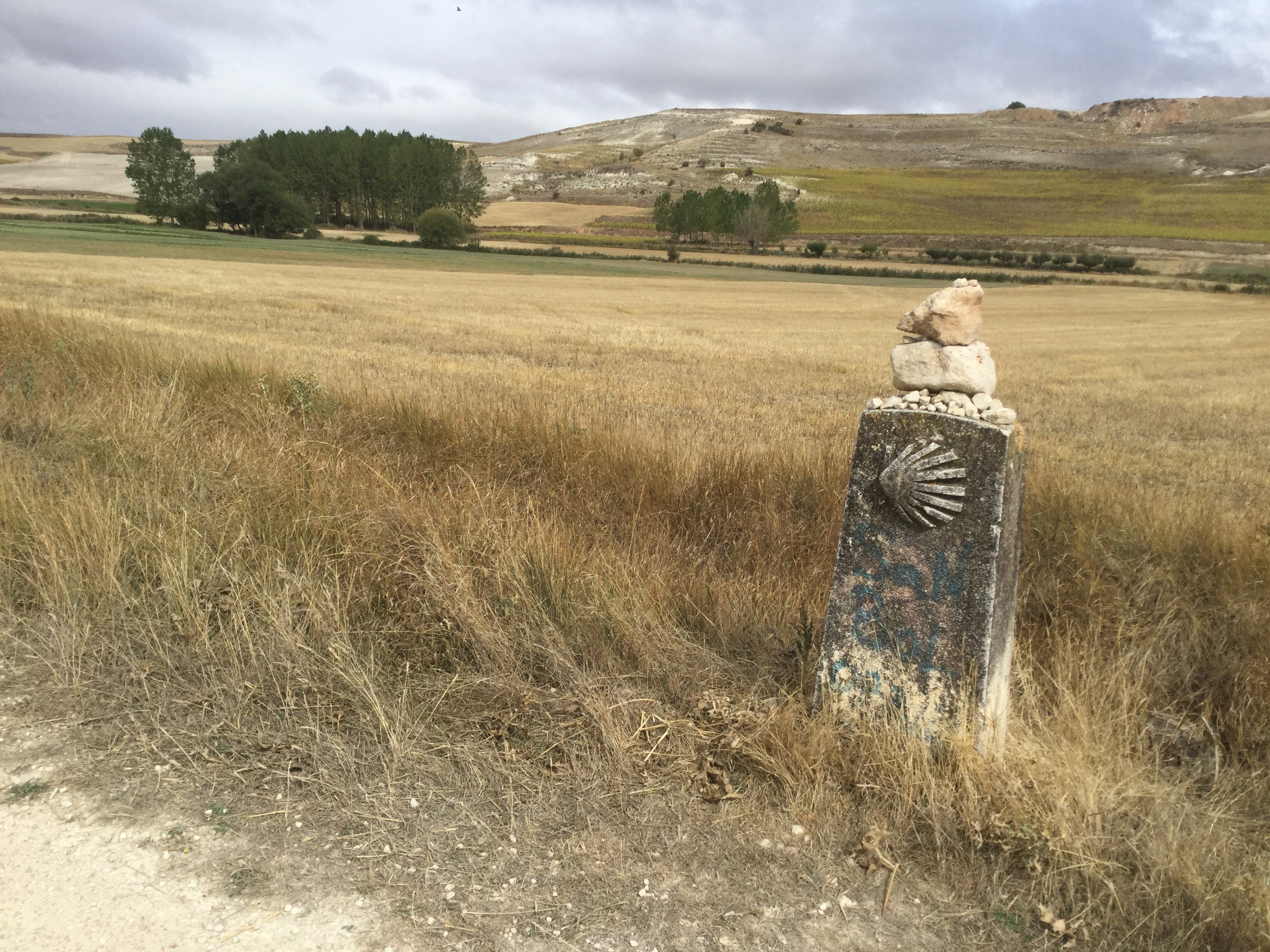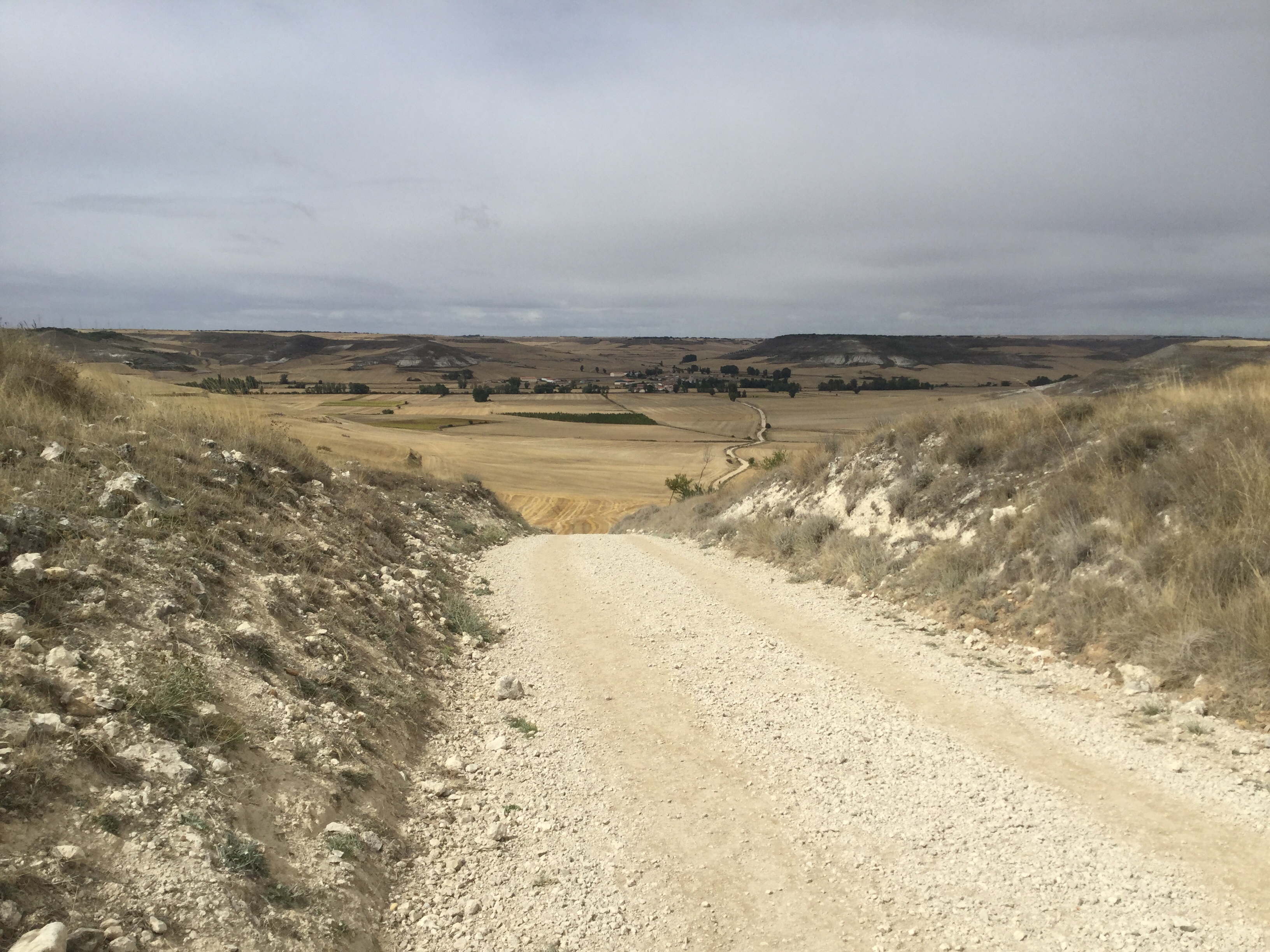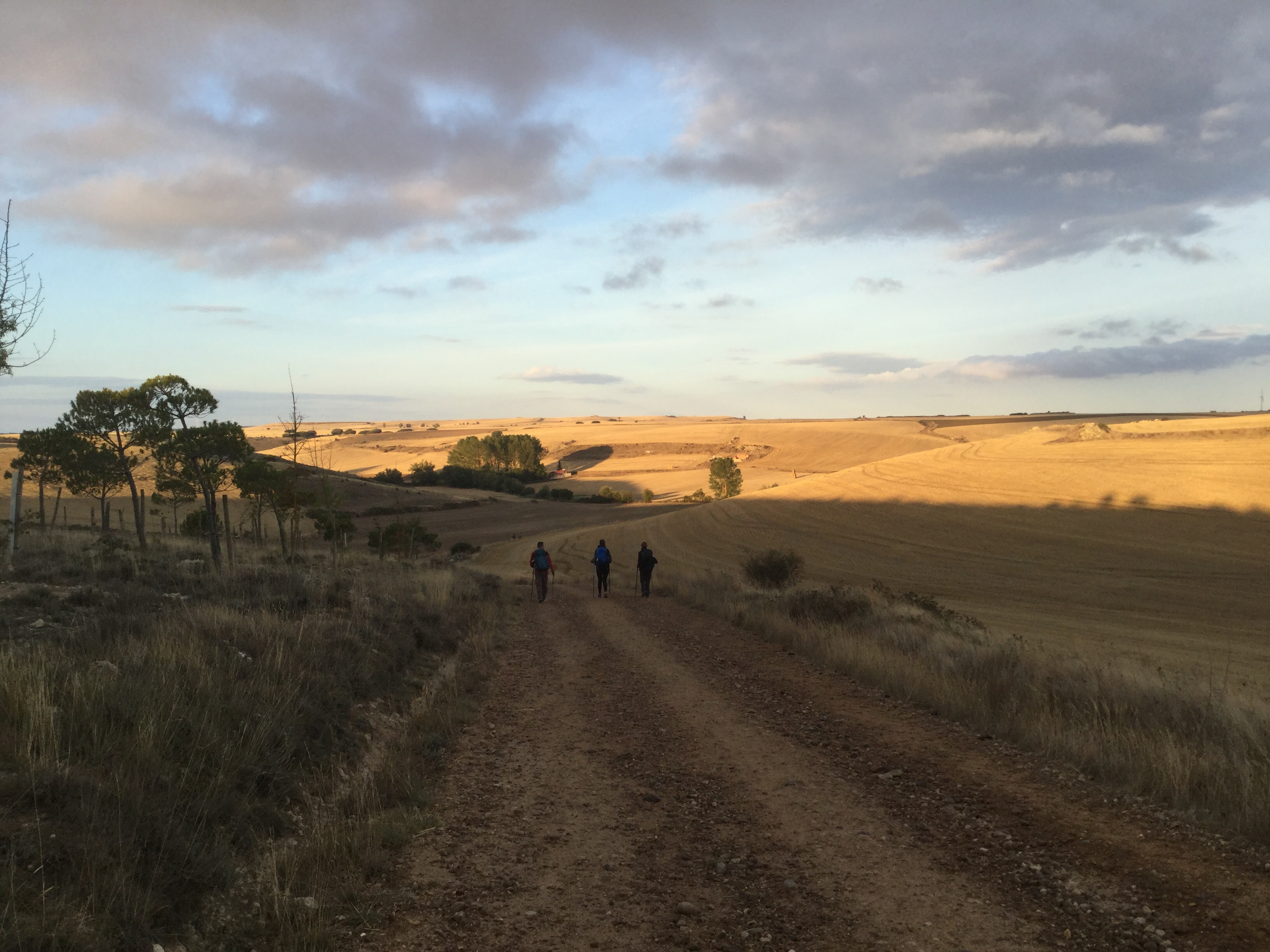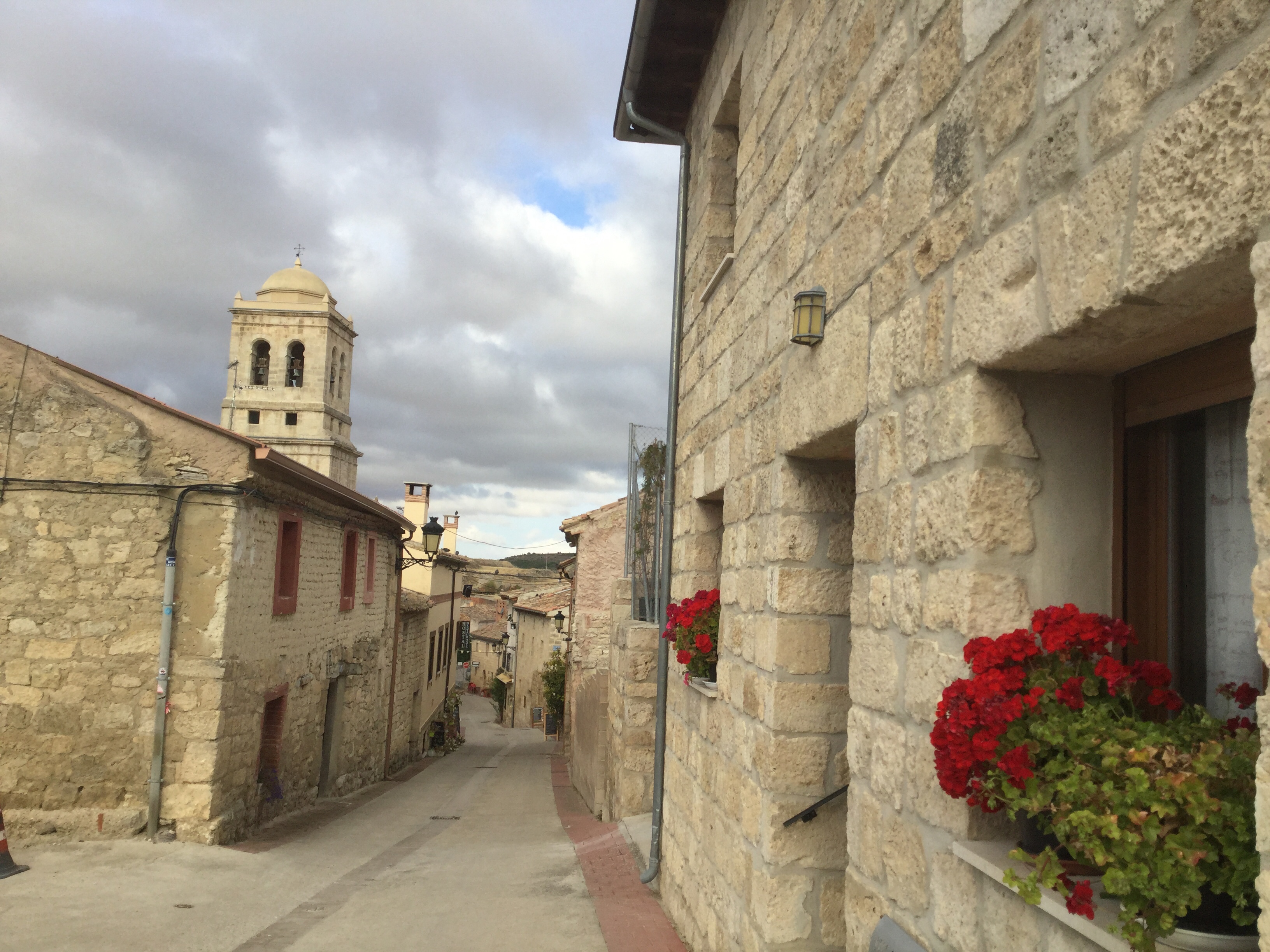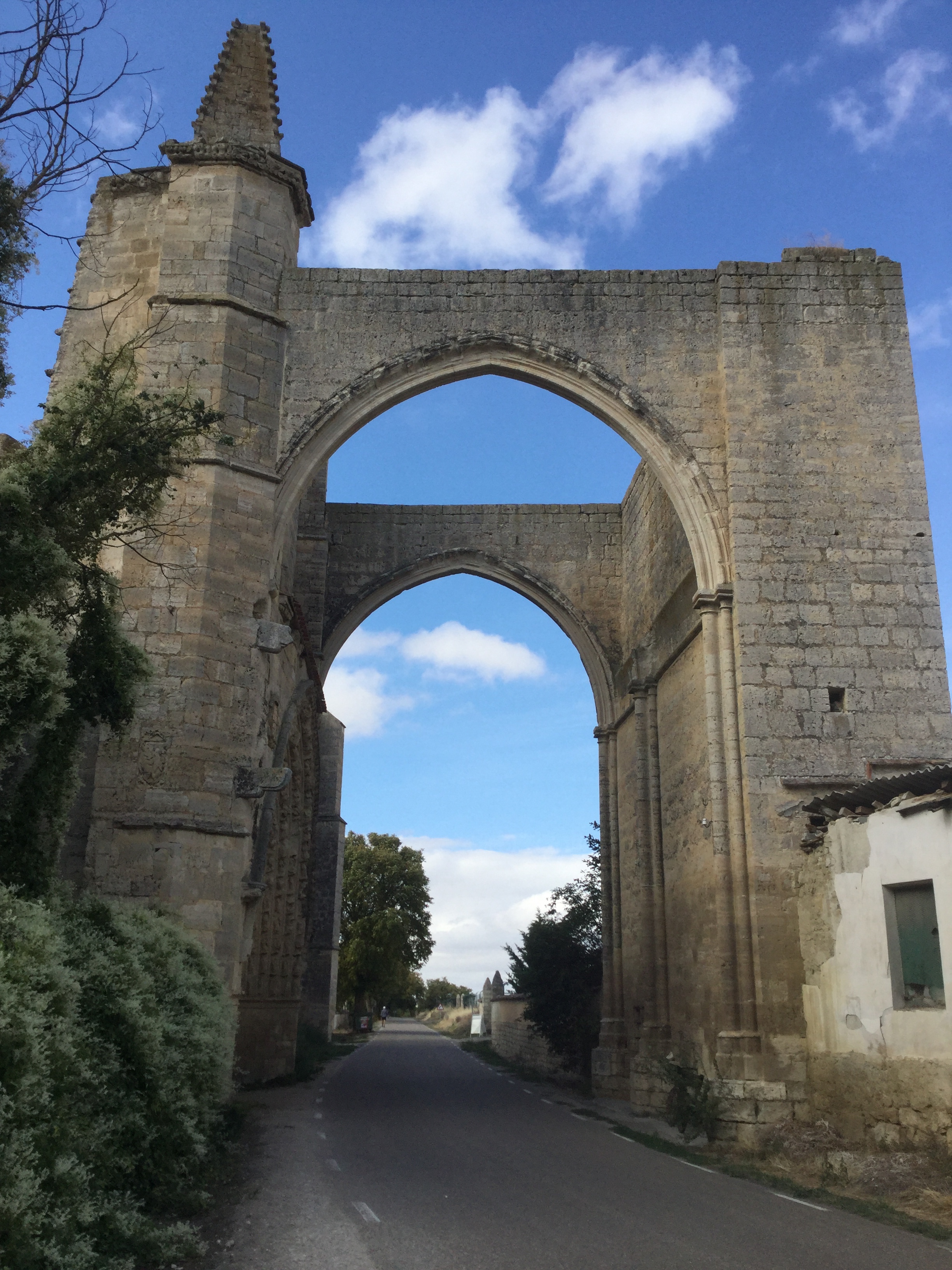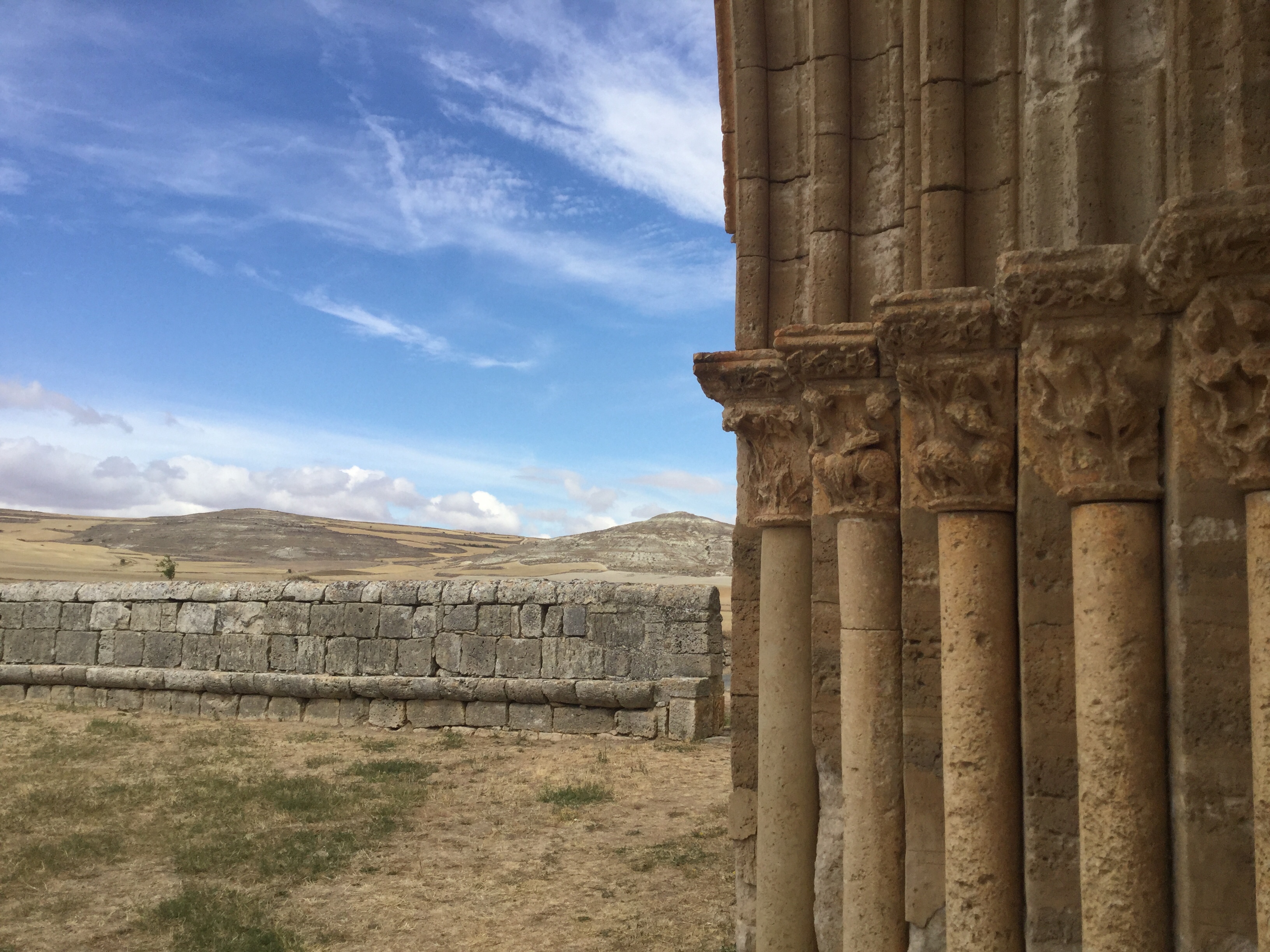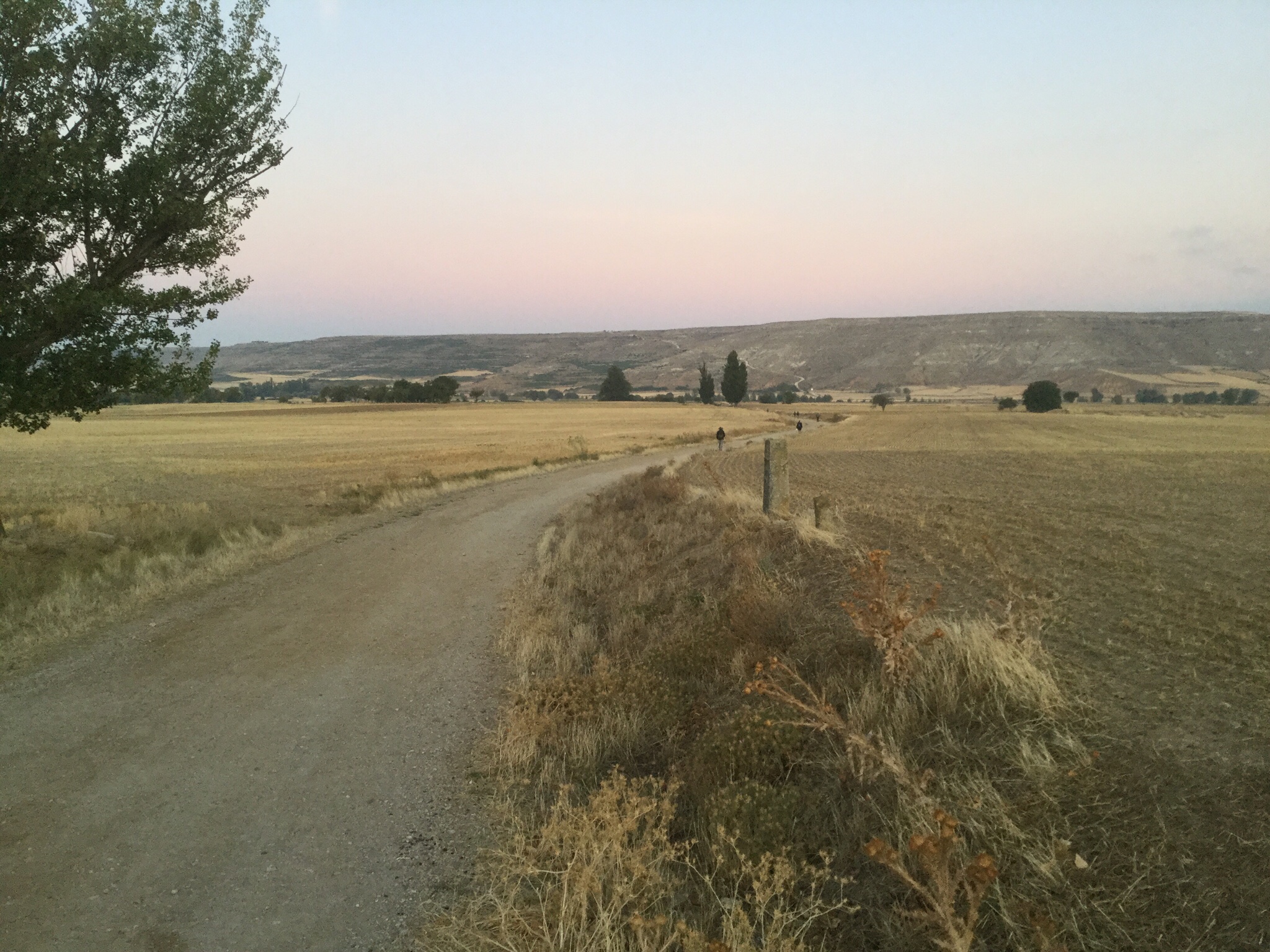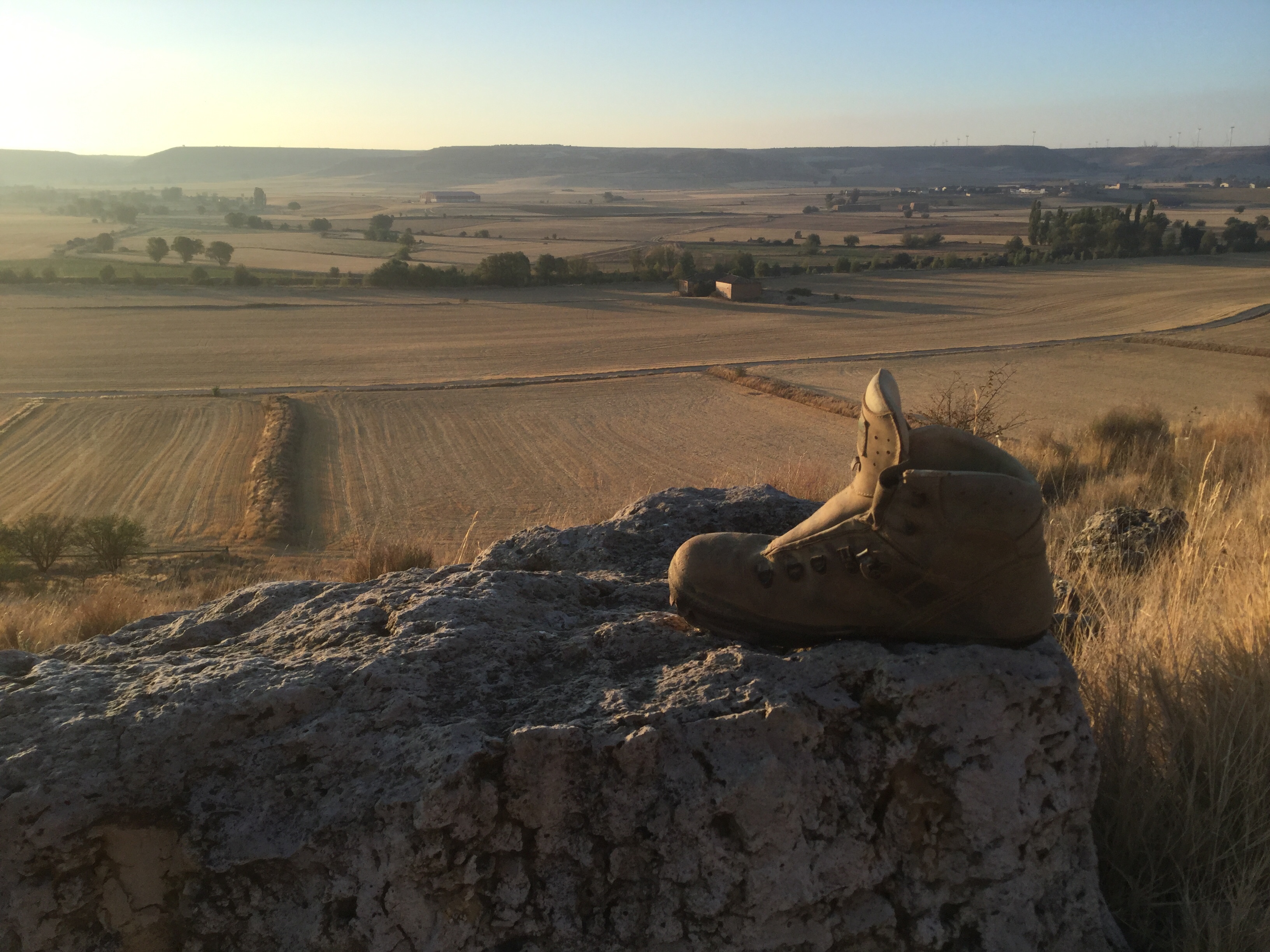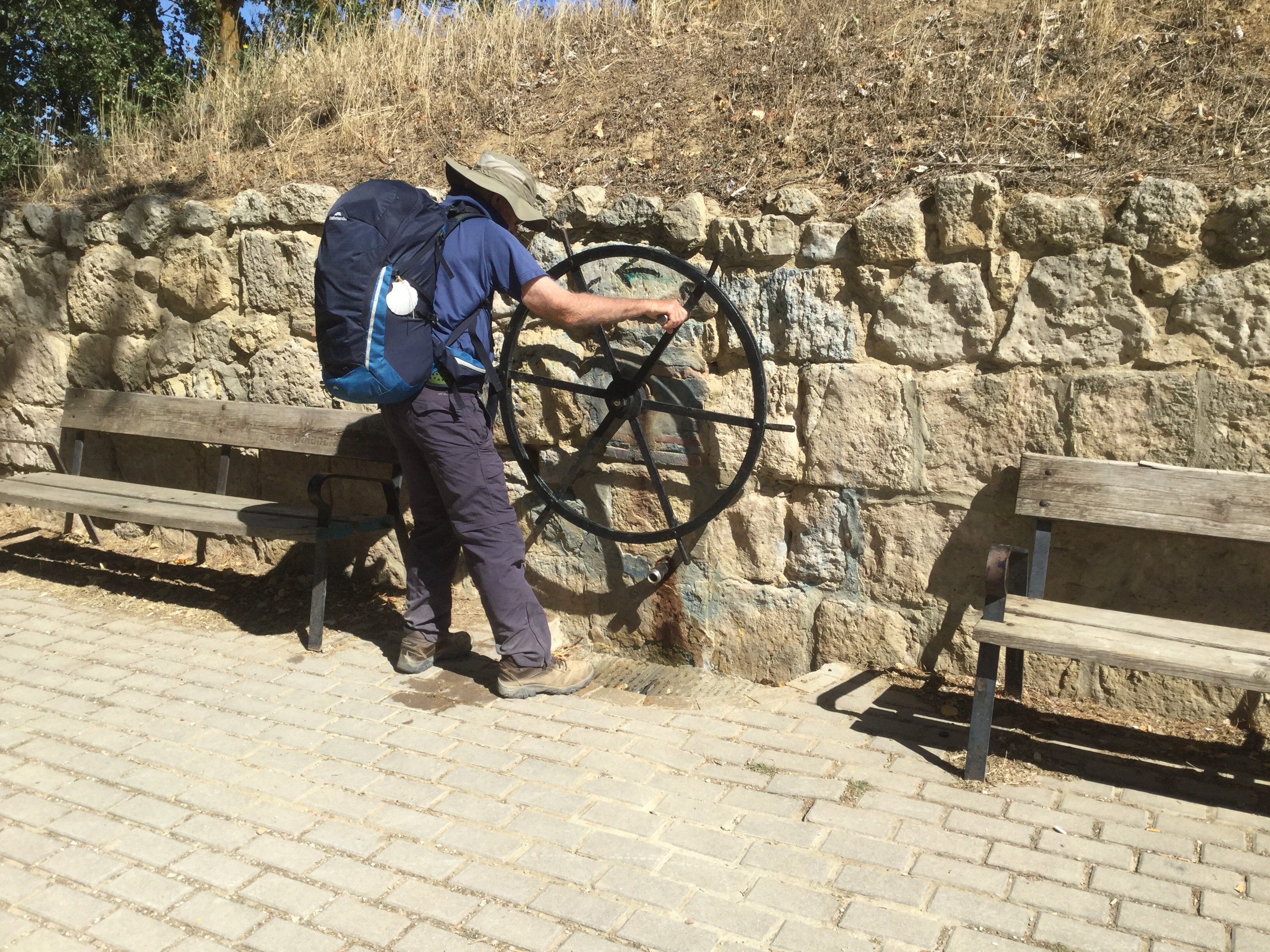Running of the cows
Multi lingual Dave is feeling very happy with himself. After only two weeks in Spain he is starting to pick up the lingo. He now knows the words vino tinto and his accent improves after an evening of practice.
We began our day to another brilliant sunrise. Couldn’t resist showing this one. It was a clear foggy morning and quite cool. The last couple of days had only reached 17 & 18 degrees but it had felt a lot warmer.
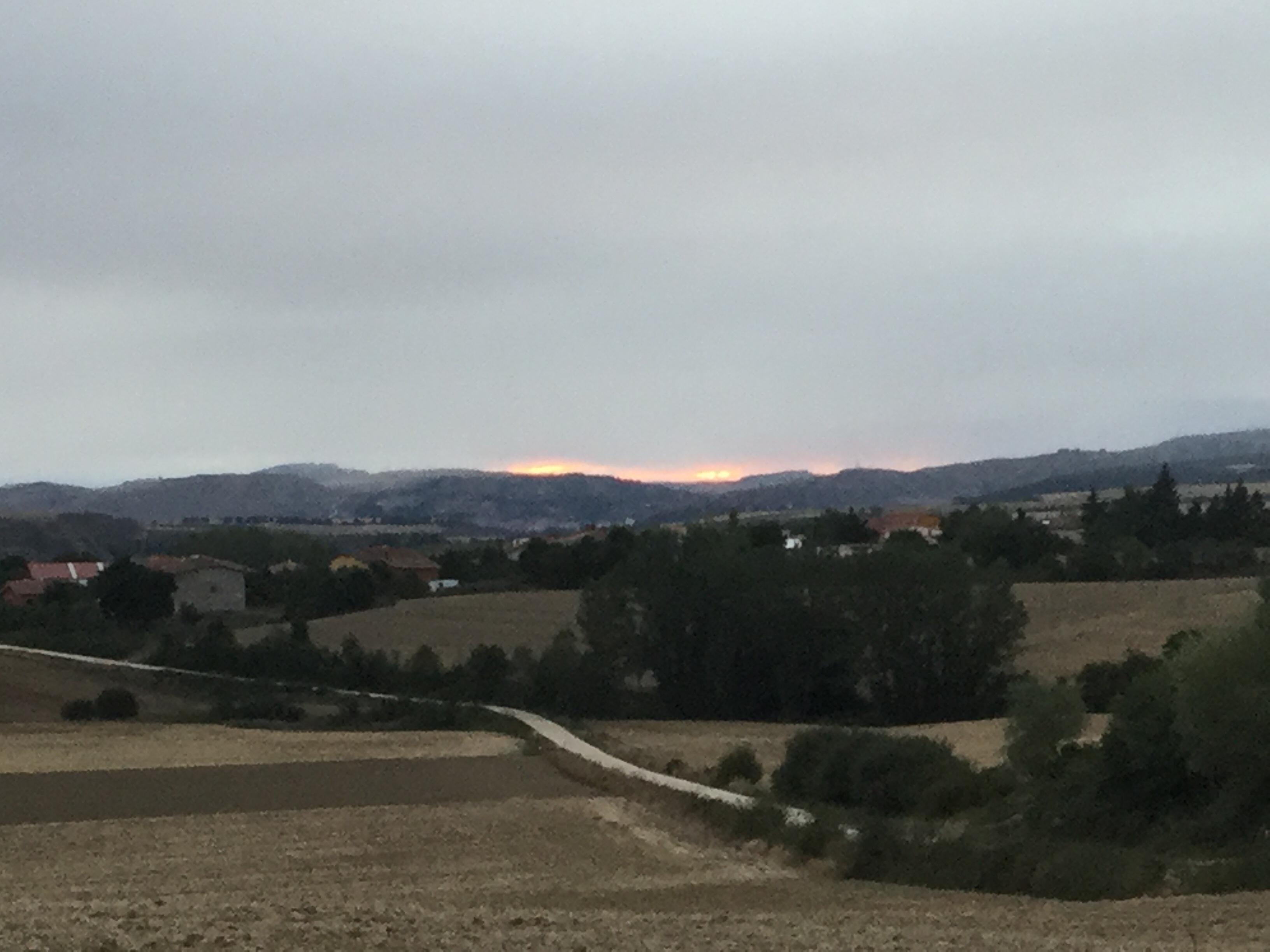
Near Espinosa del Camino we came to the last of the ruins of the 9th century Monasterio de San Felix de Oca. The founder of Burgos Count Diego Porcelos was buried here. Beside it is an old way marker. To me it looked like an elaborate shepherds hut but was obviously far more substantial in its heyday.
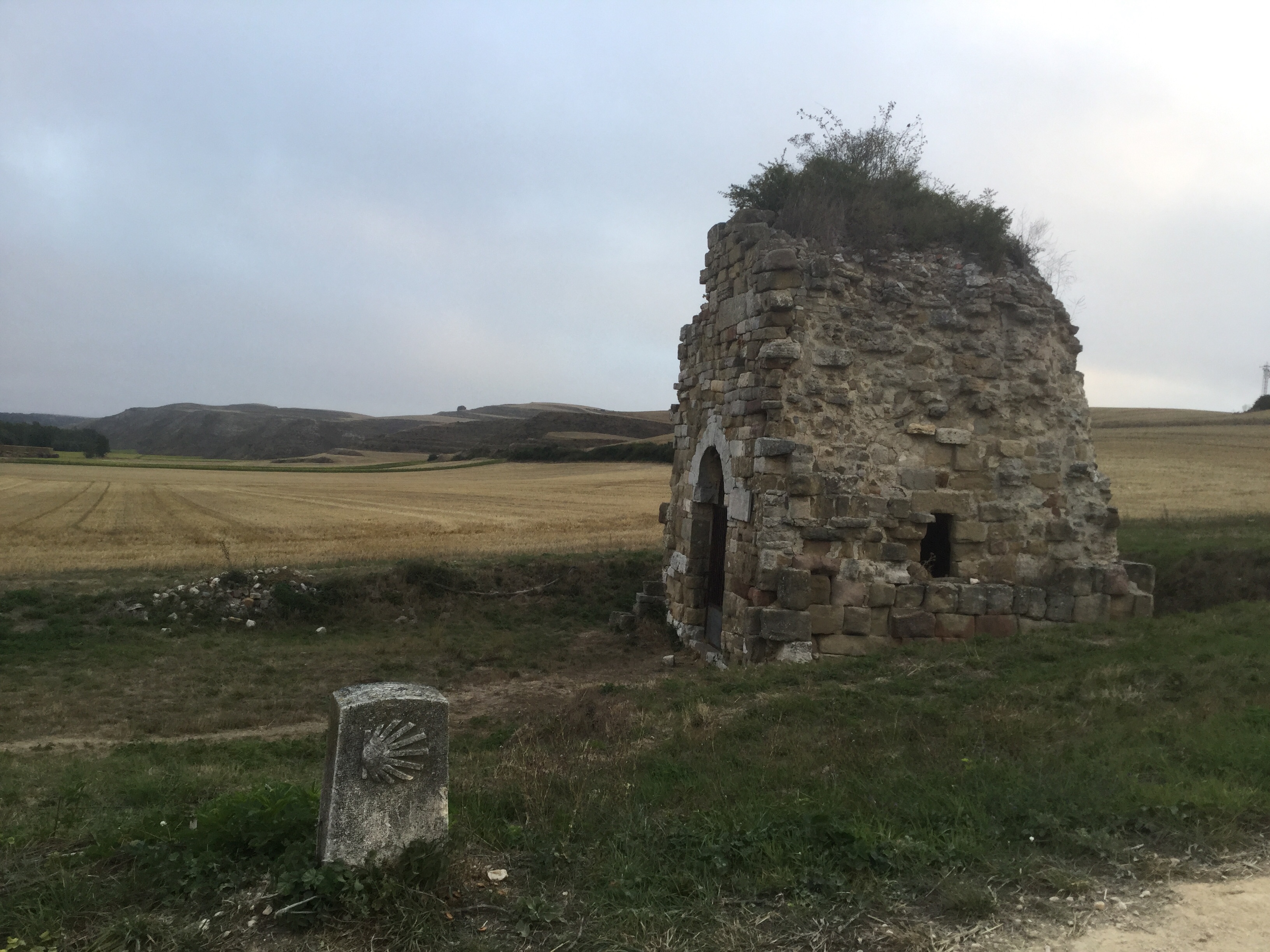
Saw this cute little creature in a burrow by the side of a path between a busy road and a river. Bigger than a mouse but not a big as a rat. I’m guessing King Kong mouse. A bit of a stalemate ensued. We waited or him to come out further and he seemed to be waiting for us to leave. He won. We moved on.
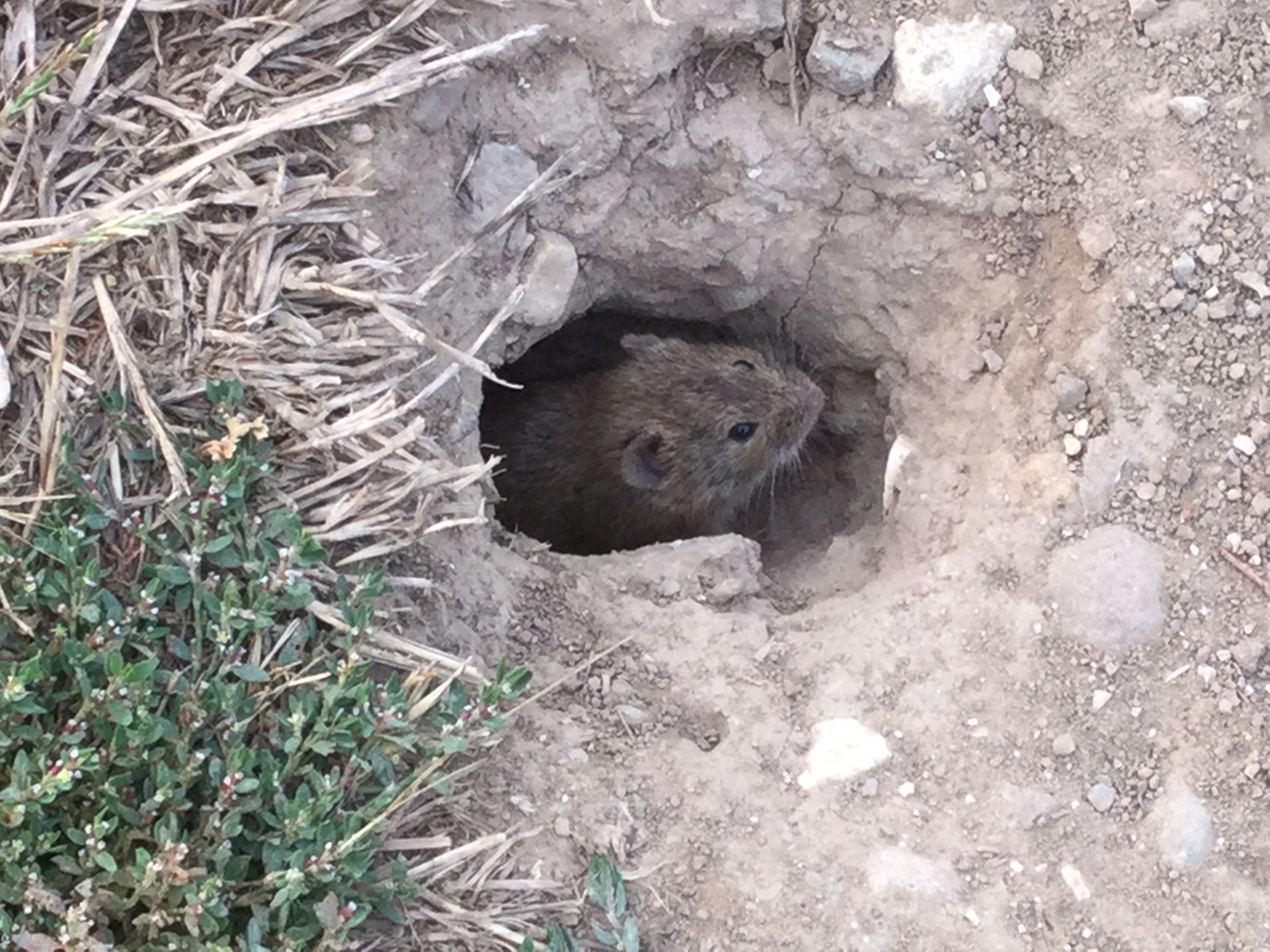
Villafranca Montes de Oca situated at the foot of the Montes de Oca was once a wild place and notorious for bandits. From here we were on a long steep uphill path of white rubbly stones and rocks. We passed between dark mysterious forests of pine and ancient oak.

At the high point of Montes de Oca there is the Monumento de los Caidos. This is more than just a monument. Here lie the shallow graves of many who were executed during Spain civil war of 1936 – 1939. On the monument is the inscription
No fue inútil su muerte, fue inútil su fusilamiento
Their death wasn’t in vain, their execution was
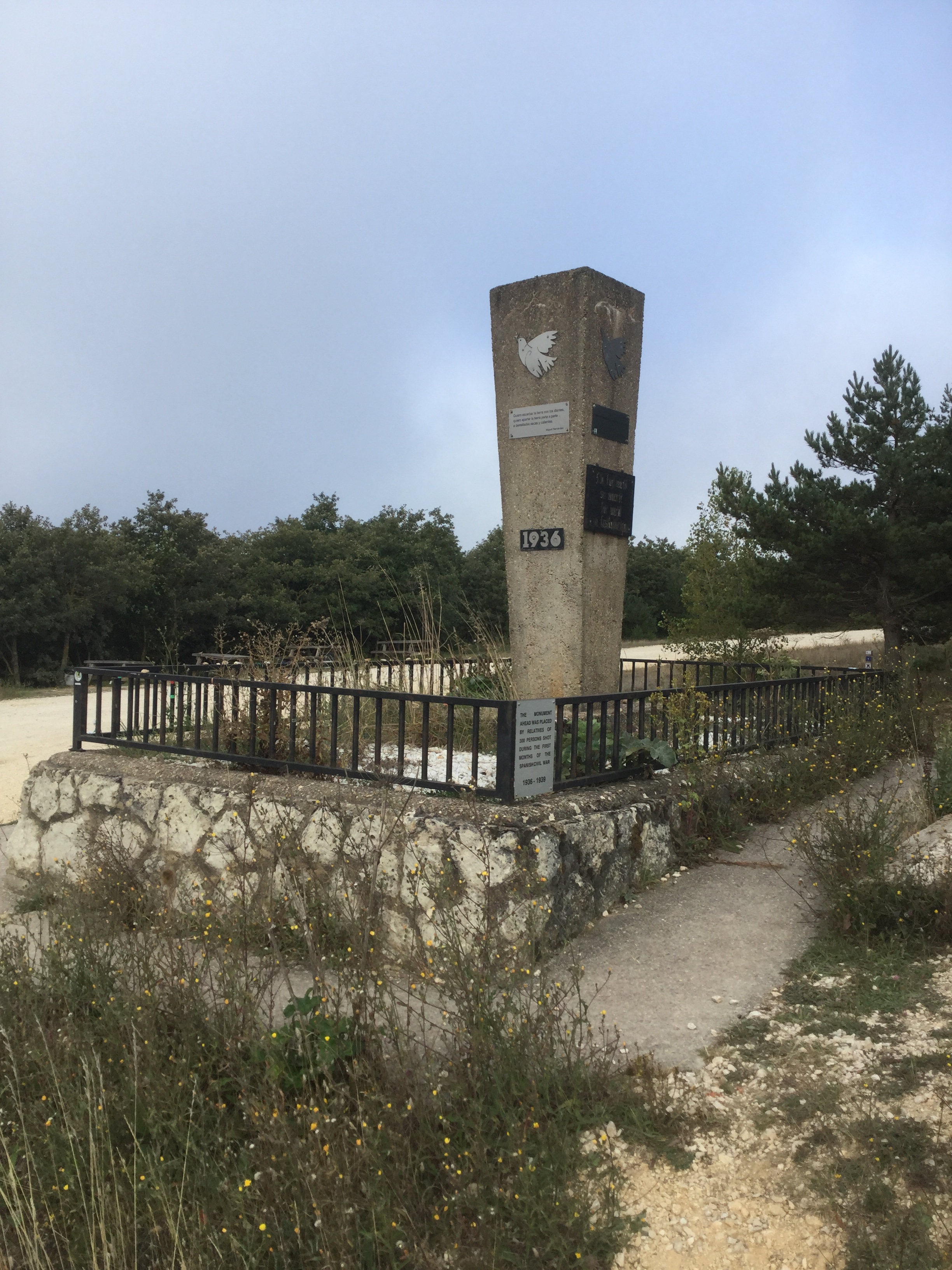
Some special moments from today’s walk.
